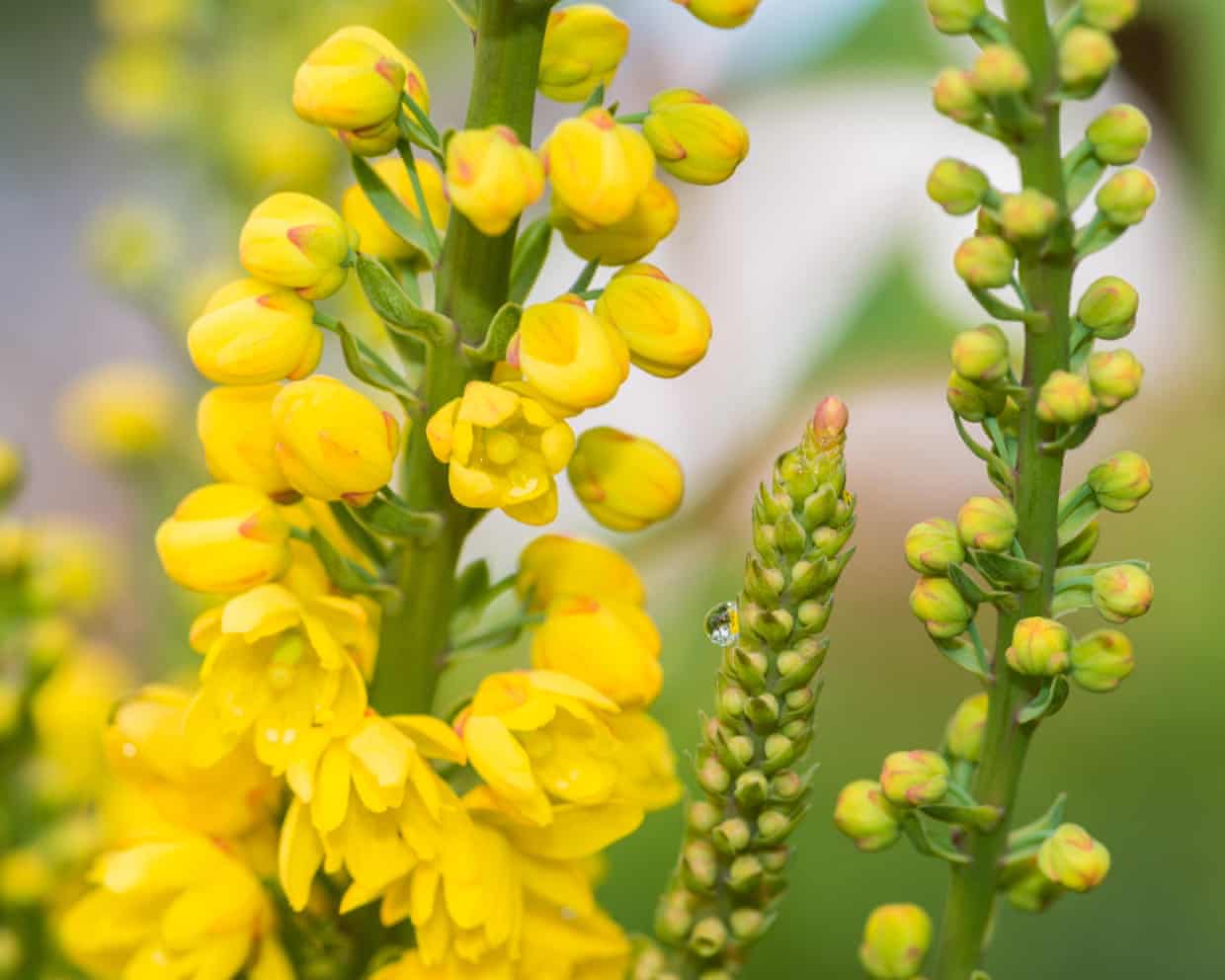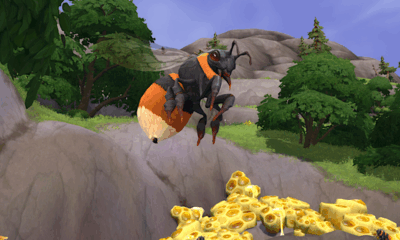Science
Pollinators Face Surprising Mechanisms in Flower Anatomy

Research reveals that flowers possess intricate adaptations in their male reproductive structures, known as stamens, that significantly influence pollinator behavior. Numerous plant species exhibit touch-sensitive movements in their stamens, creating unique interactions with visiting insects. This fascinating dynamic not only enhances the flowers’ reproductive success but also showcases the complex relationships between plants and their pollinators.
In plants such as Berberis and Mahonia, the stamens are designed to engage with pollinators in surprising ways. When an insect approaches to collect nectar, the stamens react by bending over and depositing pollen onto the insect’s face or tongue. This unexpected encounter prompts the insect to limit its stay at the flower, thereby conserving the plant’s valuable nectar and pollen. Subsequently, as the insect moves to another flower, it transfers the pollen to the female reproductive organs, facilitating cross-pollination and increasing genetic diversity.
The Catasetum orchid takes this interaction a step further. When an insect lands on these flowers, it faces a powerful mechanism that propels sticky pollen bags at high speed. This sudden release can knock the insect away while ensuring that the pollen adheres to its body. As the insect continues its journey, it inadvertently aids in the pollination of other orchids, contributing to the reproductive cycle of these unique plants.
The Triggerplant’s Rapid Response
Another remarkable example of floral adaptations can be found in the triggerplants (genus Stylidium) native to Australia. These flowers utilize a club-shaped organ that swings rapidly when triggered by an insect’s touch. The movement occurs in an astonishing 10 milliseconds, enabling the flower to deliver pollen directly to the visiting insect while simultaneously receiving any pollen the insect may carry. This rapid response not only maximizes the chances of successful pollination but also allows the flower to reset quickly for the next visitor.
The interactions between flowers and insects highlight the intricate strategies plants have developed to optimize reproductive success. By engaging pollinators in such dynamic ways, these plants ensure that their genetic material is effectively shared with other individuals, fostering biodiversity in their ecosystems.
Understanding these mechanisms offers insights into the delicate balance of nature and underscores the importance of preserving plant diversity. As pollinators play a crucial role in food production and ecosystem health, recognizing the complexities of their interactions with plants is vital for conservation efforts.
-

 Science1 week ago
Science1 week agoMicrosoft Confirms U.S. Law Overrules Canadian Data Sovereignty
-

 Technology1 week ago
Technology1 week agoGoogle Pixel 10 Pro Fold Specs Unveiled Ahead of Launch
-

 Technology1 week ago
Technology1 week agoWorld of Warcraft Players Buzz Over 19-Quest Bee Challenge
-

 Science5 days ago
Science5 days agoChina’s Wukong Spacesuit Sets New Standard for AI in Space
-

 Health6 days ago
Health6 days agoRideau LRT Station Closed Following Fatal Cardiac Incident
-

 Science1 week ago
Science1 week agoXi Labs Innovates with New AI Operating System Set for 2025 Launch
-

 Lifestyle6 days ago
Lifestyle6 days agoVancouver’s Mini Mini Market Showcases Young Creatives
-

 Science1 week ago
Science1 week agoInfrastructure Overhaul Drives AI Integration at JPMorgan Chase
-

 Technology1 week ago
Technology1 week agoHumanoid Robots Compete in Hilarious Debut Games in Beijing
-

 Top Stories1 week ago
Top Stories1 week agoSurrey Ends Horse Racing at Fraser Downs for Major Redevelopment
-

 Technology1 week ago
Technology1 week agoNew IDR01 Smart Ring Offers Advanced Sports Tracking for $169
-

 Business6 days ago
Business6 days agoCanadian Stock Index Rises Slightly Amid Mixed U.S. Markets
-

 Health6 days ago
Health6 days agoB.C. Review Urges Changes in Rare-Disease Drug Funding System
-

 Technology5 days ago
Technology5 days agoDragon Ball: Sparking! Zero Launching on Switch and Switch 2 This November
-

 Technology1 week ago
Technology1 week agoFuture Entertainment Launches DDoD with Gameplay Trailer Showcase
-

 Science1 week ago
Science1 week agoNew Precision Approach to Treating Depression Tailors Care to Patients
-

 Technology1 week ago
Technology1 week agoGlobal Launch of Ragnarok M: Classic Set for September 3, 2025
-

 Education5 days ago
Education5 days agoParents Demand a Voice in Winnipeg’s Curriculum Changes
-

 Technology1 week ago
Technology1 week agoInnovative 140W GaN Travel Adapter Combines Power and Convenience
-

 Business1 week ago
Business1 week agoNew Estimates Reveal ChatGPT-5 Energy Use Could Soar
-

 Health5 days ago
Health5 days agoRideau LRT Station Closed Following Fatal Cardiac Arrest Incident
-

 Business5 days ago
Business5 days agoAir Canada and Flight Attendants Resume Negotiations Amid Ongoing Strike
-

 Health1 week ago
Health1 week agoGiant Boba and Unique Treats Take Center Stage at Ottawa’s Newest Bubble Tea Shop
-

 Business1 week ago
Business1 week agoSimons Plans Toronto Expansion as Retail Sector Shows Resilience










